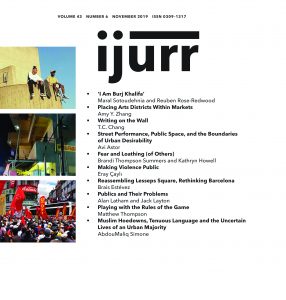This article examines the dual role of arts districts as places situated simultaneously in the urban land and art markets. It highlights the need for research into arts districts to take this dual role into account, as well as the impact that the two markets can have on these places. While the impact of the art market on land values in arts districts has been studied in some cases of art‐led gentrification, there has been limited consideration of how the changing organization and structure of the art world and art market have affected these places, especially during the last decade. Through a case study of 798 Arts District in Beijing, China, this article demonstrates that both land value and the art market situation need to be taken into account when explaining changes to and/or the spatial stickiness of an art scene, and that an artist community’s investment in the value of an arts district as a generator of symbolic capital in the art market could be one driver of land value. The article concludes by advocating for greater attention to the dual market role of arts districts, as well as a stronger engagement with the knowledge produced by art scholars in geographical and urban studies of arts districts.

